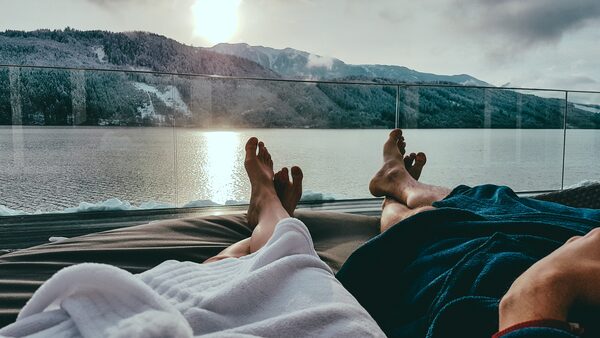
By definition, all vacations are meant to provide a break from the daily grind, but wellness-based tourism goes further still, prioritizing your physical and emotional health at every turn.Christopher Moswitzer/stock
Canadians now travel more widely and frequently than ever before, taking almost 500,000 more trips abroad in 2018 than the previous year, according to a report from the Conference Board of Canada. While it’s never been easier to explore the world, all of that adventure – and the compromises to deep sleep and healthy eating that inevitably come with it – can be draining. Returning from a holiday in need of some quality down-time (the classic “I need a vacation from my vacation,”) is a natural side effect. The growing trend of wellness tourism is designed to offer a solution to this very problem.
By definition, all vacations are meant to provide a break from the daily grind, but wellness-based tourism goes further still, prioritizing your physical and emotional health at every turn. It’s like adventure travel, except instead of an adrenaline rush you’re chasing zen.
“Wellness can mean different things to different people, but I think for many people the idea of wellness and the idea of slowing down go hand in hand,” says Dylan Thuras, co-founder of Atlas Obscura, a travel company and publication that specializes in uncommon experiences. “When people travel they often place a lot of pressure on themselves to maximize the time and money they are spending.”
And they are spending a lot. According to Skift, a company that tracks trends in the travel industry, the wellness economy is now worth about US$4.2-trillion. Tourism is a big part of that. It’s also becoming a bigger slice of the tourism pie, growing at 6.5 per cent annually – double the rate of regular tourism.
While the category is growing, wellness travel isn’t actually new. “The earliest sanatoriums and health spas start[ed] showing up in America in the late 1700s and really hit their stride in the mid-to-late 1800s,” Thuras says. Their rise can be seen as both a practical and emotional response to the effects of rapid industrialization.” Today’s idea of wellness comes from a similar place – “a reaction to our current digital revolution,” according to Thuras. “People feel anxious, overwhelmed and burned out. We’ve even managed to make vacations about growing one’s personal brand. To focus on wellness makes sense.”
It’s also highly marketable.
“The only thing that is continually changing and evolving is how wellness experiences are being marketed,” according to Jessica Wynne Lockhart, an award-winning travel journalist. “At the moment, the focus seems to be on ‘wellness,’ ‘self-care’ and ‘mindfulness.’ Two years ago, the bee’s knees was ‘digital detoxes.’ Five to 10 years ago, it was yoga retreats. This coming year, we’re going to see a lot more vacations that incorporate cannabis for mental and physical health.”
The focus on individual health can lead destinations and retreats to follow some very specific trends, including divorce parties and ‘painmoons,’ which are essentially the opposite of honeymoons; a trip to assist in moving on following a traumatic event. With a little help, we can all have our Eat, Pray, Love experience. Except, unlike Elizabeth Gilbert, who wrote the bestseller about her physical and spiritual journey around the world after a difficult divorce, we can pay someone else to organize it.
“Keep in mind that wellness holidays, as a product, are being sold to a particular socio-economic group,” Lockhart says. “University students backpack. Retirees cruise or caravan. Families go on family holidays. But people who are in their 30s and 40s and legitimately want to use our two weeks of holiday time to recharge? We go on a wellness vacation.”